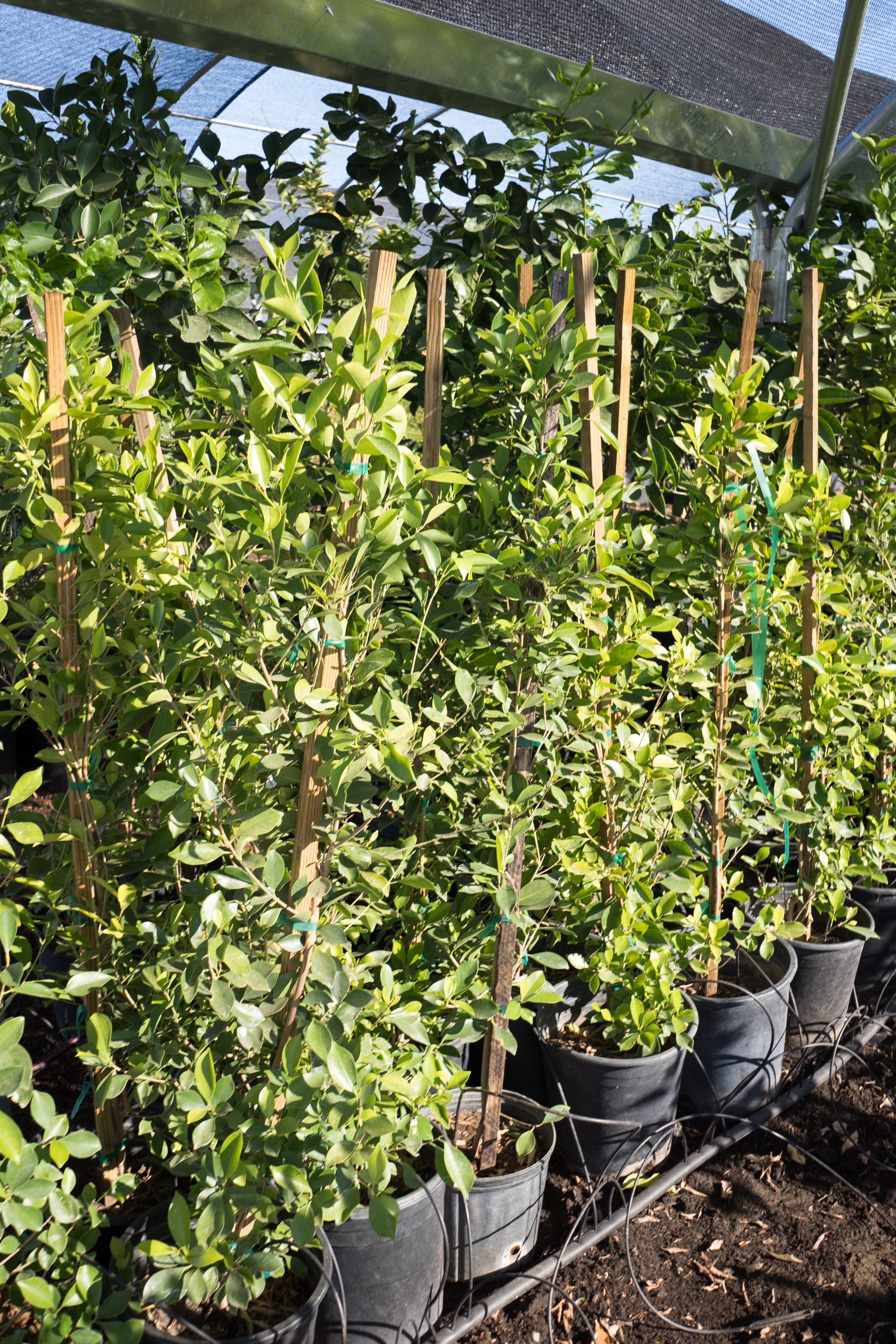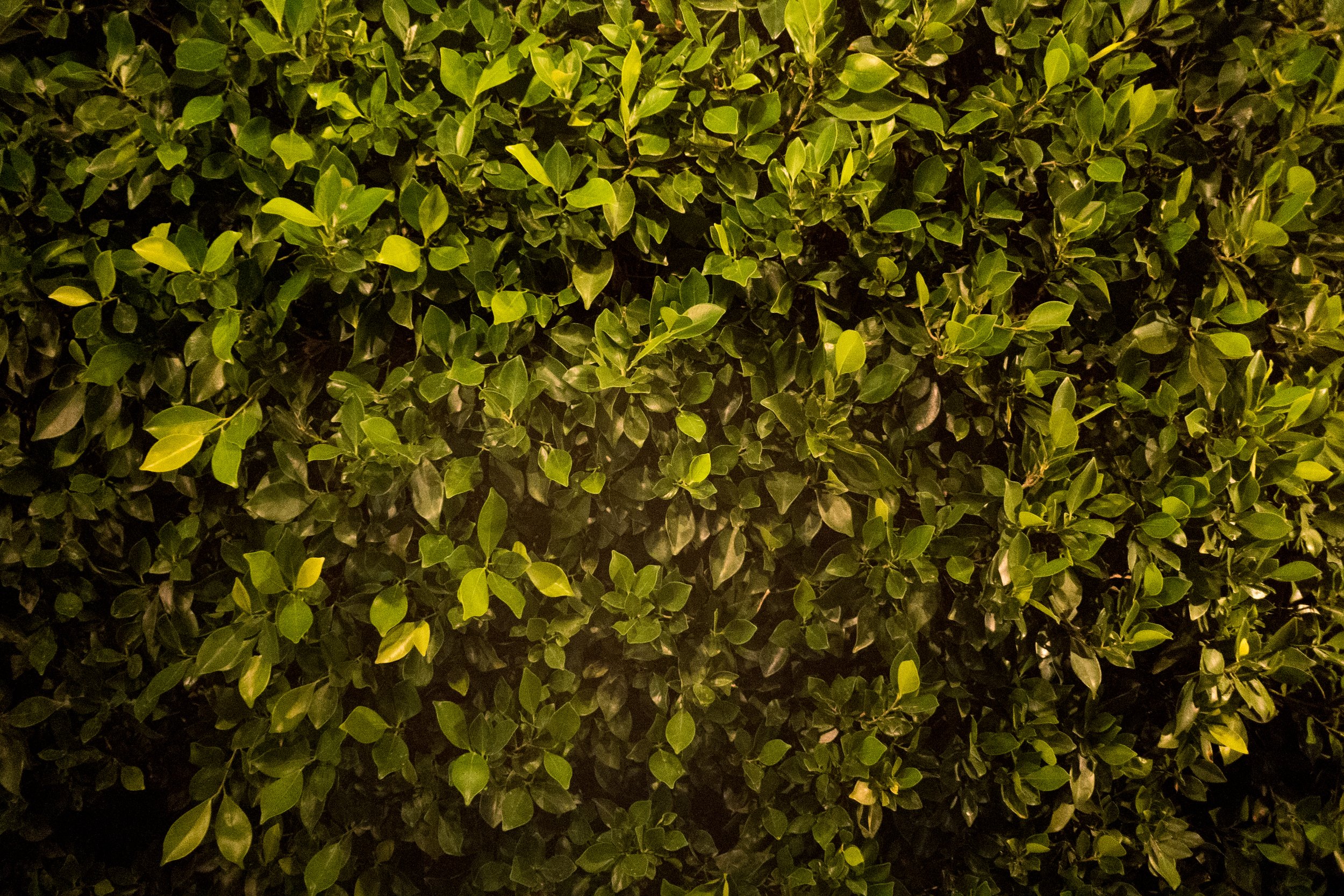Ficus Nitida / Ficus Microcarpa
Ficus nitida is probably the most popular plant used for privacy hedges in Southern California, and is certainly so among our customers.
Here in the Palm Springs area, people love it for its lush green color, dense foliage, heat tolerance, and high adaptability to pruning and shaping.
These attributes make Ficus nitida not only a great candidate for formal hedges and screening, but also as a large shade tree, small topiary, and indoor houseplant.
Botanical name: Ficus microcarpa. This plant is still commonly referred to as Ficus nitida, which is the previous botanical name.
Other names: Ficus Indian laurel, Indian laurel, Indian laurel fig, Chinese banyan, Malayan banyan, Ficus retusa, Curtain fig
Large Ficus nitida privacy hedge
TABLE OF CONTENTS
Ficus nitida Appearance
Ficus nitida is an evergreen, so you can enjoy its dense and lustrous green leaves year-round given favorable conditions.
Smooth, light gray trunk and protruding roots.
Easily pruned and trained to 5-20 foot tall privacy hedge.
If allowed to grow as a standalone tree, the ficus tree can be over 50 feet tall and over 70 feet wide. They do not grow to a gigantic size in the dry Southwest deserts compared to humid regions such as Hawaii and Florida, but will still grow to a very large shade tree if allowed.
Tiny, unnoticeable green flowers and round fruits.
Ficus nitida in 5-gallon containers for sale at the nursery
Ficus nitida Landscaping Tips
Plant Ficus nitida where dense, glossy, bright green foliage is desired. Extremely heat tolerant as long as it gets ample water during heatwaves.
For using Ficus nitida as a privacy hedge, space the plants 2 feet apart. The stems and leaves will fill out to create a complete screen. The hedge will also lessen street noise. Keep plants pruned to maintain shape and size. Never prune more than a third of the plant all at once since this can damage it.
For using Ficus nitida as a shade tree, plant in an area with lots of ample space. It has an extensive root system that protrudes above ground, so we do not recommend planting it next to structures. Consider using a root barrier/root guard* to keep the roots from spreading to undesired areas, and instead redirect them so that they grow downwards.
The ficus tree is very robust. Train it to the desired shape as a topiary whether it's a large outdoor tree or a small indoor bonsai tree. When pruning the tree, wear gloves since the ficus sap can cause irritation.
Protect from frost. Will recover quickly from leaf shed once the weather warms up.
*GDNC can deliver and install plants for your convenience at a separate cost. If you'd like for us to install root barriers, let us know in your inquiry.
Ficus nitida Origin
Tropical and subtropical regions in South Asia and Australia
Ficus nitida Care
Soil: Sandy or loamy soils that are moderately fertile.
Temperature: Very heat-tolerant. Protect from frost and temperatures above 110 degrees, especially when young.
Water: Regular watering during warm temperatures. Allow the soil to slightly dry out between waterings. Either use a moisture meter or stick your finger through the soil to gauge the moisture level. Requires less water once established.
Sun: Full sun. Partial shade is ok in Palm Springs area
Ficus nitida Problems
Pests: Thrips and whiteflies.
Blast the pests off with water or use insecticidal soap or neem oil. Repeated application is necessary to disrupt their life cycles. Do not perform pest control when the temperatures are above 80 degrees Fahrenheit, since it can burn the leaves of the ficus plant.
Signs of overwatering: Root rot
Signs of too little water: Shriveling leaves
Signs of too much sun: Leaf burn and leaf drop
Signs of too little sun: Weak stems, stunted growth
Ficus nitida Propagation
Propagate Ficus nitida with stem cuttings. Plant cuttings with a few leaves intact in soil or place them in water. Once it grows taller, keep it staked until mature.
FAQ
HOW MUCH DOES Ficus nitida COST?
At our nursery, Ficus nitida costs $25 for a 5-gallon container, $75 for a 15-gallon container, $200 for a 24-inch box, $450 for a 30-inch box, $700 for a 36-inch box, and $1,100 plus for a 48-inch box and larger.
Prices are subject to change. Please contact us for the most up-to-date information on pricing. We may have larger sizes available. We provide installation services locally at a separate cost.
Is Ficus Nitida evergreen?
Yes. Ficus nitida is an evergreen that makes for great hedges and shade trees year-round.
How can I make my Ficus fuller?
Pruning will create more branch nodes and therefore, leaves. Assuming your Ficus is healthy, the secret to Ficus hedges that are full and tightly packed is light, regular pruning.
When should I prune my Ficus?
Light pruning can be done throughout the year unless the Ficus is under a lot of stress, such as during very hot or cold weather. If you want to cut back your Ficus significantly, we recommend the spring or fall if you're in California.
Does Ficus nitida have invasive roots?
Yes, the ficus tree can develop extensive roots if you do not keep the size of the plant in check. We do not recommend planting it next to structures. Consider using a root barrier/root guard* to keep the roots from spreading to undesired areas, and instead redirect them downwards.
How fast does Ficus nitida grow?
Ficus nitida grows fast, about 2 feet a year
Summary
| SIZE (H X W) | 50 feet |
|---|---|
| FLOWER COLOR | Green (Very tiny) |
| FLOWER SEASON | Spring |
| EXPOSURE | Full Sun |
| WATER | Moderate |
| GROWTH RATE | Fast |
| HARDINESS | 30º F, USDA Zone 10 |
| PRUNING | As Needed |



